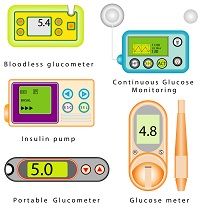Article
New Communications Standards for Diabetes Devices Announced
Author(s):
Recently published interoperability standards for diabetes devices such as continuous glucose monitors and insulin pumps should enhance diabetes management and advance research.

Recently published interoperability standards for diabetes devices such as continuous glucose monitors and insulin pumps should enhance diabetes management and advance research.
A press release from the Juvenile Diabetes Research Foundation (JDRF) along with the Canadian Clinical Trial Network and the University Health network in Toronto said the work, spearheaded by Joseph Cafazzo, MD, is a breakthrough for patients using devices like insulin pumps, blood glucose meters, and continuous glucose monitors.
Even as the technology has advanced in diabetes treatments, “proprietary communications systems developed by major manufacturers made it difficult for researchers to build upon existing technologies, particularly across different platforms.” This lack of communication between the companies and the products they manufacture, the release noted, “limited possible innovation from others considering development of artificial pancreas systems and new diabetes data management tools.”
With new interoperability standards, devices like continuous glucose monitors will be easier to synch with a patient’s smartphone or computer. The goal of the new standards is to “enable interoperability by establishing consistent data protocols and universal understanding of device data,” the release noted. “This in turn is anticipated to accelerate research and development in the area of the artificial pancreas systems and impact how patients use diabetes technology for years to come.”
Cafazzo called the standards, “a long-awaited milestone for manufacturers, researchers and for people with diabetes.” He added, “There are now defined, open standards where previously none was available. This will ultimately accelerate the ability of companies to produce new technologies for the improved management of diabetes and for developing artificial pancreas systems.”
The research was supported by the JDRF and Aaron J. Kowalski, PhD, the vice president of the JDRF Artificial Pancreas Research said the new standards go a long way in helping treatment for patients now and especially in the future.
“Artificial pancreas systems require effective communication among pumps, sensors and controllers, so we are very happy to at last have standard communication protocols in place. Now, there is one less hurdle facing the development and commercialization of artificial pancreas systems and bringing these systems to people living with type 1 diabetes,” said Kowalski.
In order to develop the new standards several groups were involved in the process including the Centre for Global health Innovation as well as others in the industry, academia, and healthcare providers, the press release noted. The work was done in order to develop standards within the Institute of Electrical and Electronics Engineering Personal Health Devices Working Group. The standards also align with those of the Bluetooth Special Interest Group Profile for Continuous Glucose Monitoring. Nathaniel Hamming and Melanie Yeung, biomedical engineers from the University Health Network also were given credit for helping with the communication standards.
According to the press release the next step will be for the JDRF to work with the Helmsley Charitable Trust to promote the new standards to manufacturers in the field. “The initiative is part of the broader JDRF/Helmsley collaboration to fund the creation and enhancement of technology that supports automating insulin delivery.”




